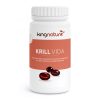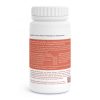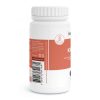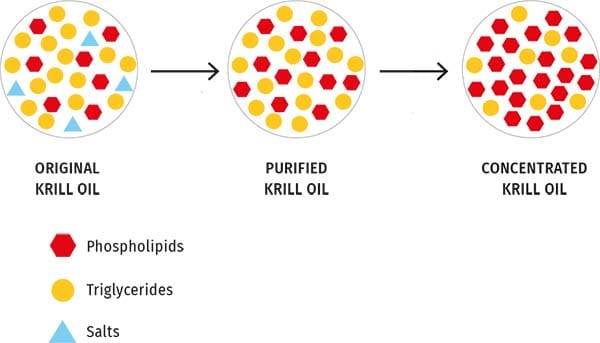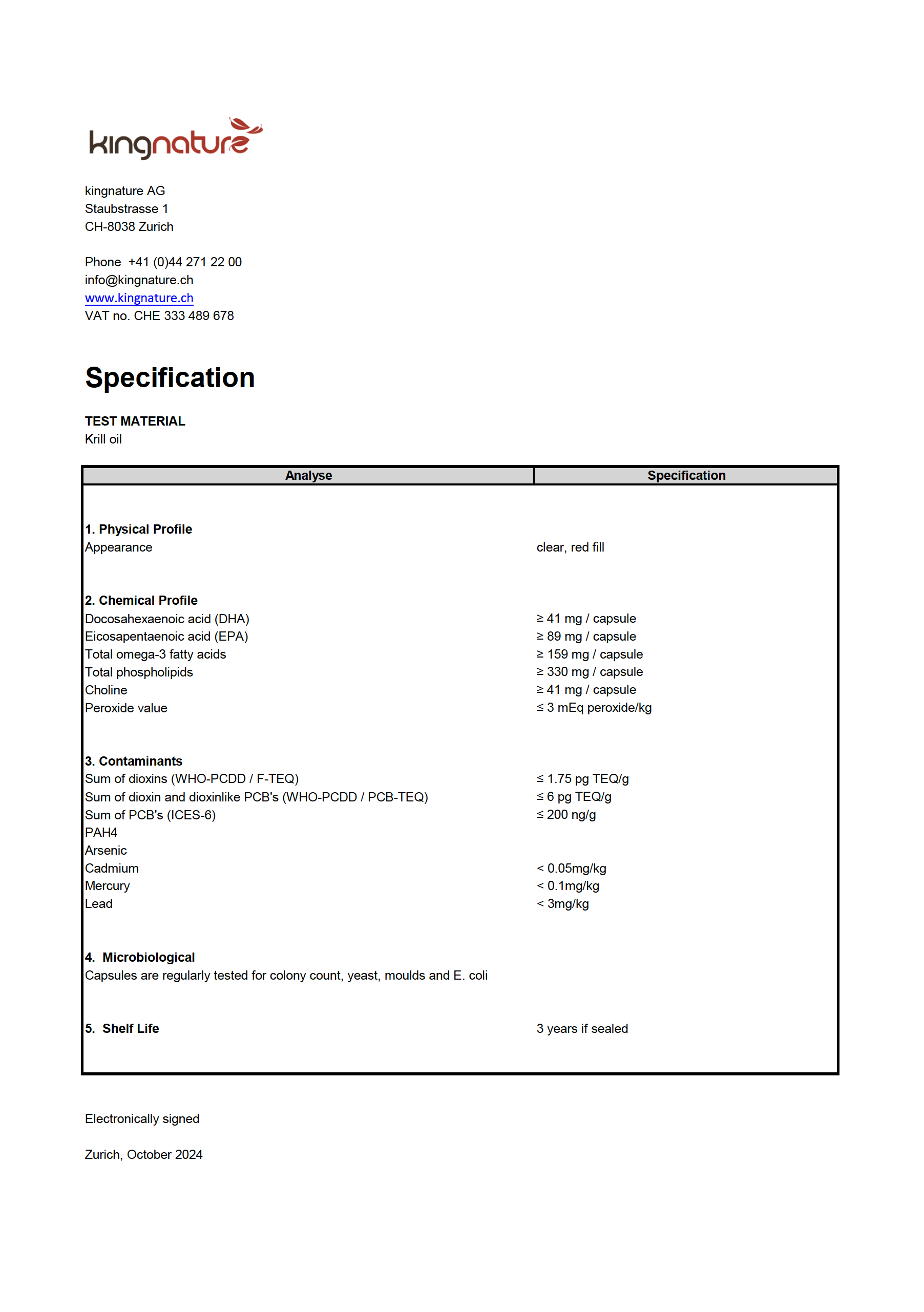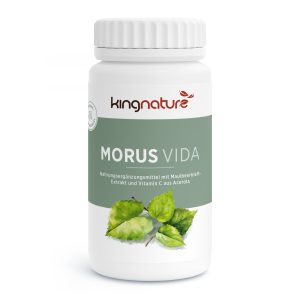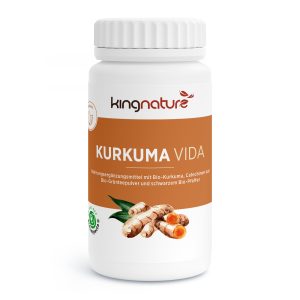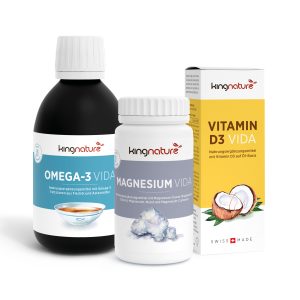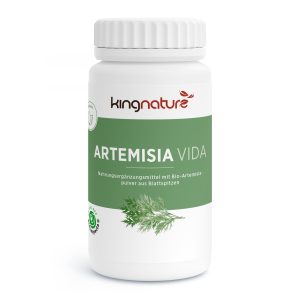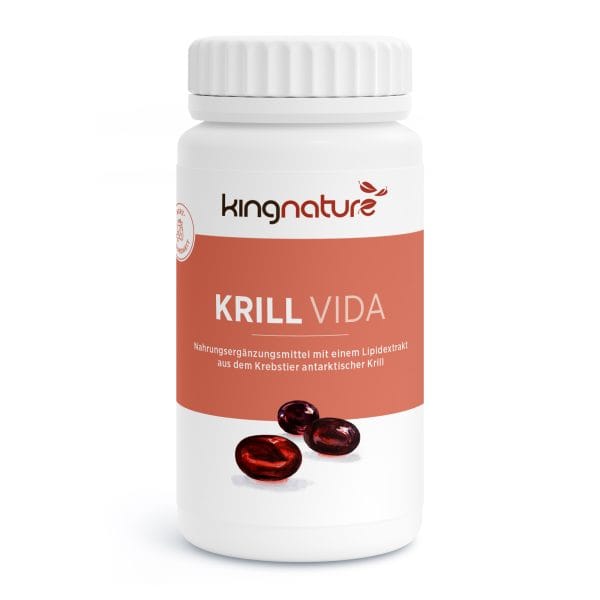
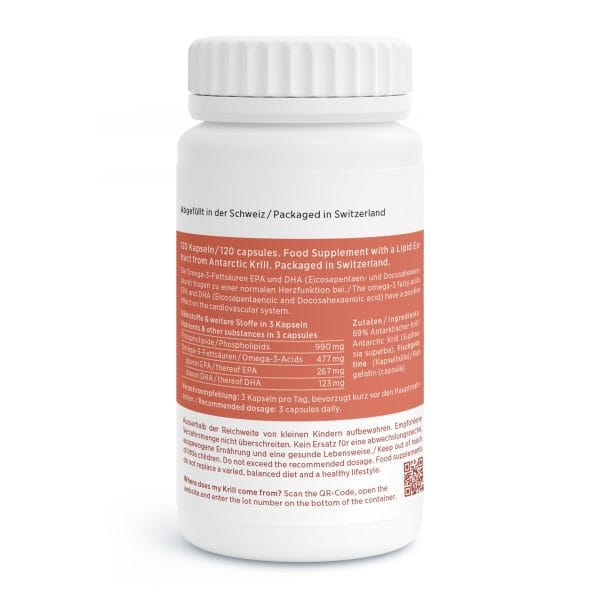
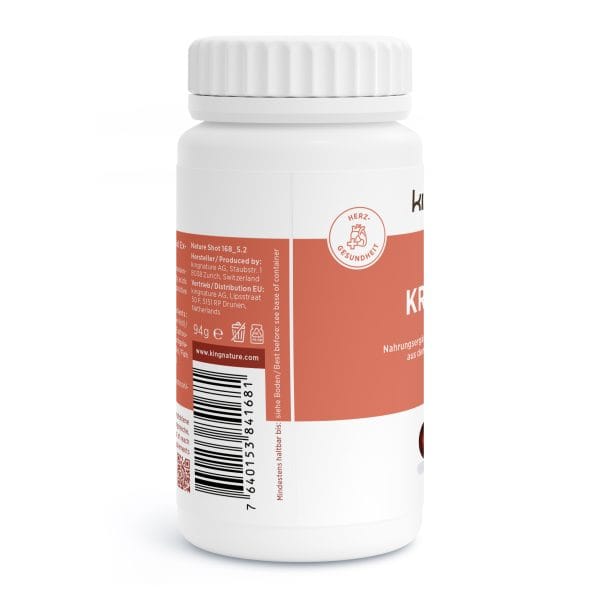

Krill Vida
| Order quantity | 1 | 2-3 | 4+ |
|---|---|---|---|
| Unit price | CHF 49.00 | CHF 46.80 | CHF 43.90 |
Good for your heart: the omega-3 fatty acids EPA and DHA contribute to normal heart function. 120 capsules with 590 mg of pure krill oil from sustainable catch. One capsule contains 159 mg omega-3 fatty acids, of which 89 mg EPA and 41 mg DHA. Net content 97 g.
Benefit from a 10% discount on Krill Vida until the end of May 2025.
Docosahexaenoic acid (DHA) is effective!
Contributes to maintaining normal brain function.
Contributes to maintaining normal vision.
Contributes to maintaining normal triglyceride levels in the blood.
Contributes to the normal development of the eyes and brain of the fetus and breastfed infant through maternal intake of docosahexaenoic acid (DHA).
Docosahexaenoic acid and Eicosapentaenoic acid (DHA/EPA) are effective!
Contribute to normal heart function.
Help maintain normal blood pressure and triglyceride levels in the blood.
Choline is effective!
Contributes to normal homocysteine metabolism.
Contributes to normal fat metabolism.
Contributes to the maintenance of normal liver function.

Good for the heart, brain and eyes! Krill oil contains remarkable amounts of the omega-3 fatty acids EPA and DHA.
Omega-3 fatty acids: good for your heart
The omega-3 fatty acids in Krill Vida are good for your heart, brain and eyes. The krill is sustainably fished and comes from Antarctic waters, which are among the cleanest on earth.
With the omega-3 acids EPA and DHA
- Good for your heart: Krill Vida contains the omega-3 fatty acids EPA and DHA. These contribute to normal heart function.
- Good for the liver: The choline in krill oil helps to maintain liver function.
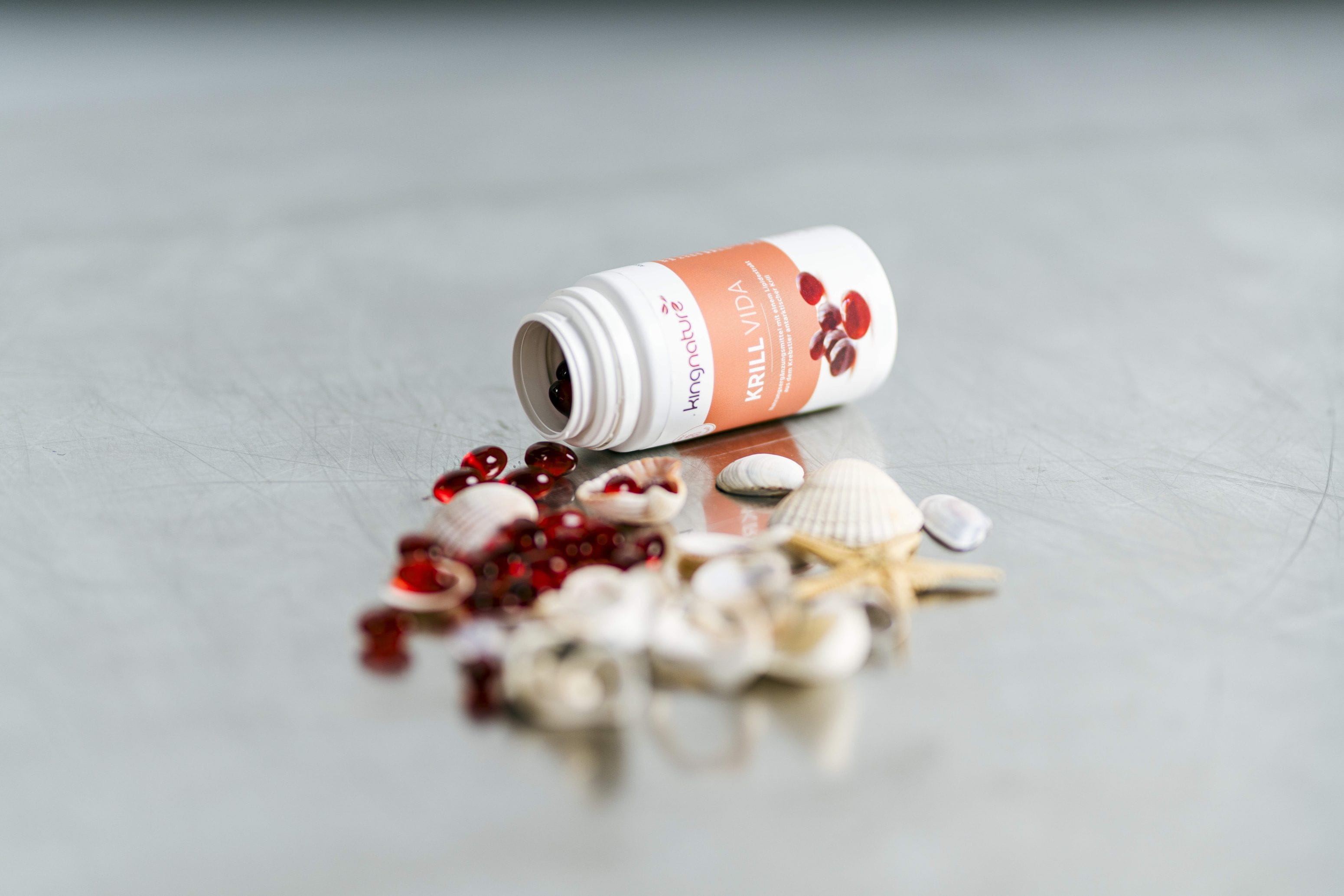

Omega-3: EPA and DHA
Krill oil is extracted from Antarctic krill (Euphausia superba). It contains remarkable amounts of the omega-3 fatty acids EPA and DHA. These are unsaturated fatty acids that are essential for the human body.
Important contribution to heart health
Current research* shows that omega-3 fatty acids and phospholipids support heart health.
* Mozaffarian D, Maki KC, Bays HE, et al.: Effectiveness of a Novel Omega-3 Krill Oil Agent in Patients With Severe Hypertriglyceridemia: A Randomized Clinical Trial. JAMA Netw Open. 2022;5(1):e2141898. doi:10.1001/jamanetworkopen.2021.41898
Good for the heart, brain and eyes
- DHA and EPA contribute to normal heart function.
- DHA and EPA contribute to normal blood pressure.
- DHA and EPA contribute to a normal triglyceride level in the blood.
- DHA contributes to the maintenance of normal brain function.
- DHA contributes to the maintenance of normal vision.
- DHA contributes to normal brain development in the fetus and infant.
- DHA contributes to normal eye development in the fetus and infant.
- Choline contributes to normal homocysteine metabolism.
- Choline contributes to normal fat metabolism.
- Choline contributes to the maintenance of normal liver function.


Advantages of Krill Vida
- Natural product with essential nutrients that support your heart.
- Traceability of each batch to the exact fishing location in the Antarctic.
- Sustainable fishing methods without bycatch.
- Gentle processing directly on the ship.
- Concentrated krill oil = desirable ingredients are retained, undesirable ones are removed.
- Somewhat water-soluble = far-reaching consequences for the tolerance, digestion and absorption of the oil.
- Without sugar, sweeteners, additives, auxiliary substances, colorants, fillers or preservatives
- Selected raw materials of the highest quality
The omega-3 fatty acids DHA and EPA are good for the heart and brain: they contribute to normal heart function and the maintenance of normal brain function.
Differences between krill oil and fish oil
- Studies1 show that krill oil is better absorbed by the body than fish oil.
- Unlike fish, krill are not at risk of overfishing. The krill population is estimated at around 500 million tons. No other animal species in the world produces more mass than krill. A maximum of 0.5% of the global stock is fished.
- Nevertheless, it is important to only use krill from sustainable sources. The krill in Krill Vida comes from sustainable and controlled catches.
1https://lipidworld.biomedcentral.com/articles/10.1186/s12944-015-0015-4, Clinical Study Report. Bioavailability of fatty acids from krill oil, krill meal and fish oil in healthy subjects–a randomized, single-dose, cross-over trial
| Krill oil | Fish oil | ||
|---|---|---|---|
| Pure, natural krill oil directly from Antarctic waters |  |  | From different fish species and sources |
| Omega-3 fatty acids are bound to phospholipids |  |  | Omega-3 fatty acids are bound to triglycerides |
| Mixes with water |  |  | Does not mix with water |
Krill Vida: sustainable, gentle and of high quality
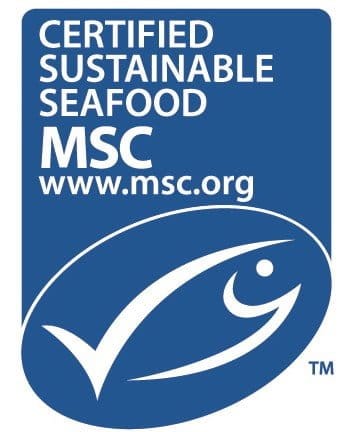
MSC-certified
The MSC certification guarantees that the krill is fished using sustainable methods and is traceable throughout the entire supply chain. We know where the krill contained in every single capsule has been fished. This traceability ensures maximum transparency.

Nachhaltige Fischerei
For the fifth time in a row, “our” Antarctic krill fishery has received an “A” rating from the Sustainable Fisheries Partnership (SFP) for its well-managed fishery. The independent report states that the fish stocks are in very good condition and the krill fishery in the Atlantic Southern Ocean is highlighted as being particularly well managed.

ECO Harvesting
Eco-harvesting is a technology for fishing krill in a sustainable and environmentally friendly way. The trawl is permanently submerged and the krill is gently brought on board the ship via a special tube, reducing the risk of bycatch of other species to almost zero.
Sustainable and natural
- Sustainable: The krill is fished according to the strict principles of CAMLR. This organization is responsible for sustainable krill fishing in the Antarctic. The catch data is transmitted daily by satellite to the authorities and CAMLR. Antarctic krill fishing is only carried out in a small area for which CAMLR has set a catch quota of just 1% of the total biomass (by way of comparison, a catch quota of 10% is considered sustainable for fishing).
- With respect for nature: krill are caught in the months when whales, for example, have finished rearing their young and are no longer only in the Antarctic. This means that krill fishing does not compete with these beautiful animals. No trawls are used, which destroy the seabed.
- Capsule shell made from fish gelatine: Krill Vida capsules are made from fish gelatine instead of the usual bovine gelatine.


Pure Nature Label®
The Pure Nature Label® stands for the highest quality in our products.
- Vital substances of the highest quality for the best possible results
- High-quality extracts with all active ingredients
- Own production facility in Switzerland
- Highest quality and hygiene standards
- Direct sourcing from premium suppliers with excellent social and ecological standards
- Maximum avoidance of additives and auxiliary substances
- Full declaration of all ingredients
- In-house research and development for genuine innovation
- Independent laboratory tests
- Testing of raw materials for microbiology, pesticides, heavy metals and other toxins
- Our vegan capsule shells are made from 100% plant-based premium cellulose (HPMC) and are free from carrageenan, PEG, gelatine and heavy metals
- Controlled product stability
- Minimised ecological footprint
- Total absence of magnesium stearate and silicon dioxide
- All dietary supplements 100% free from nanoparticles, GMO, artificial colours or flavours and added sugar (household sugar, cane sugar)
Find out more about the Pure Nature Label® from kingnature.
Top quality krill oil
Quality is our top priority. We therefore have our raw materials and end products regularly tested by independent laboratories. This is how we ensure that our vital substances meet the highest purity and quality standards and are free from harmful substances.
We are happy to disclose the results. In this way, we make our top quality transparent and comprehensible for you.
